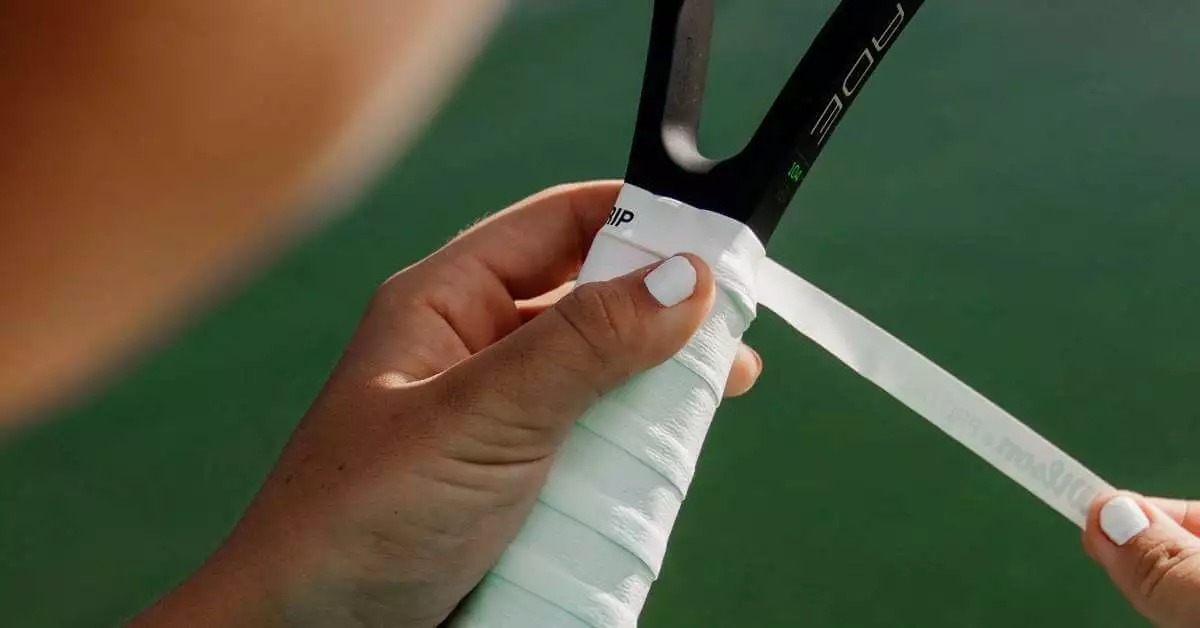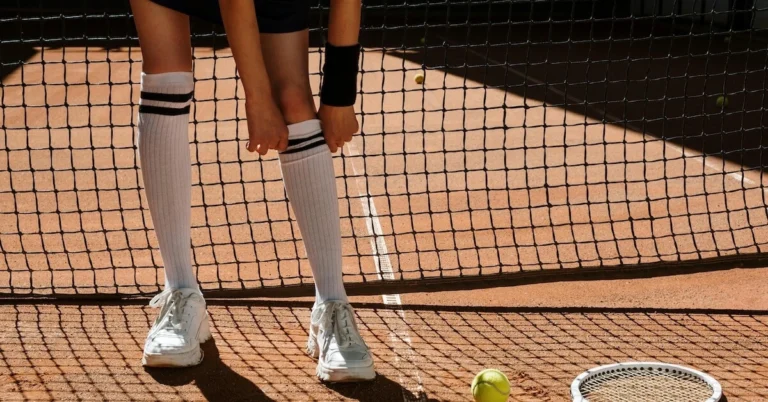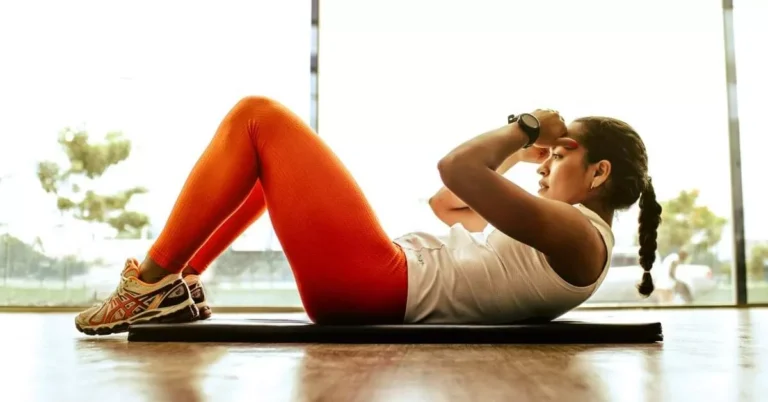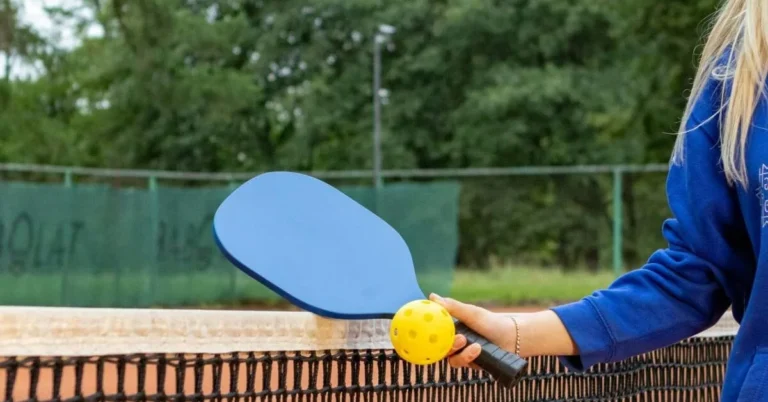Are you looking to improve your tennis game? One way to do so is by mastering the different types of tennis grips and knowing when to use them. The grip you use can greatly impact your shots, so it’s important to understand the various options available to you.
One of the most common tennis grips is the Eastern grip, which is great for beginners. This tennis grip involves placing your index knuckle on the third bevel of the racket handle and is ideal for hitting flat shots. However, if you’re looking to add more topspin to your shots, you may want to consider the Semi-Western grip. By understanding the different types of tennis grips and when to use them, you can take your game to the next level and become a more well-rounded player.
Pro:
✅ best all-rounder ✅ stability ✅ high support
Con:
❌ might see the dirt on the white faster
Understanding Tennis Grips
When it comes to tennis, your grip on the racket can make all the difference in your performance. The grip you choose can affect your level of control, power, and spin, so it’s important to understand the different types of tennis grips and when to use them.
Types of Tennis Grips
There are four main types of tennis grips: Eastern Forehand Grip, Continental Grip, Semi-Western Grip, and Western Grip. Each tennis grip has its own benefits and drawbacks, and the choice of tennis grip depends on your playing style, hand size, and strength.
Other Factors to Consider
In addition to the type of tennis grip, there are other factors to consider when choosing a tennis grip. These include:
- Grip Size: The size of your grip can affect your level of control and comfort. A grip that is too small can cause your hand to slip, while a grip that is too large can make it difficult to maneuver the racket.
- Overgrip: Many players use an overgrip to improve their grip on the racket. Overgrips can provide extra cushioning and traction, as well as help absorb sweat.
- Racket Face: The way you hold the racket can affect the angle of the racket face. For example, a more closed racket face can help generate topspin, while a more open racket face can help generate slice.
- Octagon: Some rackets have an octagonal shape, which can provide extra grip and control.
- Grip Styles: There are different ways to hold a tennis racket, including the Eastern Forehand Grip, Western Forehand Grip, and Eastern Backhand Grip. Each grip style has its own benefits and drawbacks, and the choice of grip style depends on your playing style and preferences.
The Importance of Tennis Grips
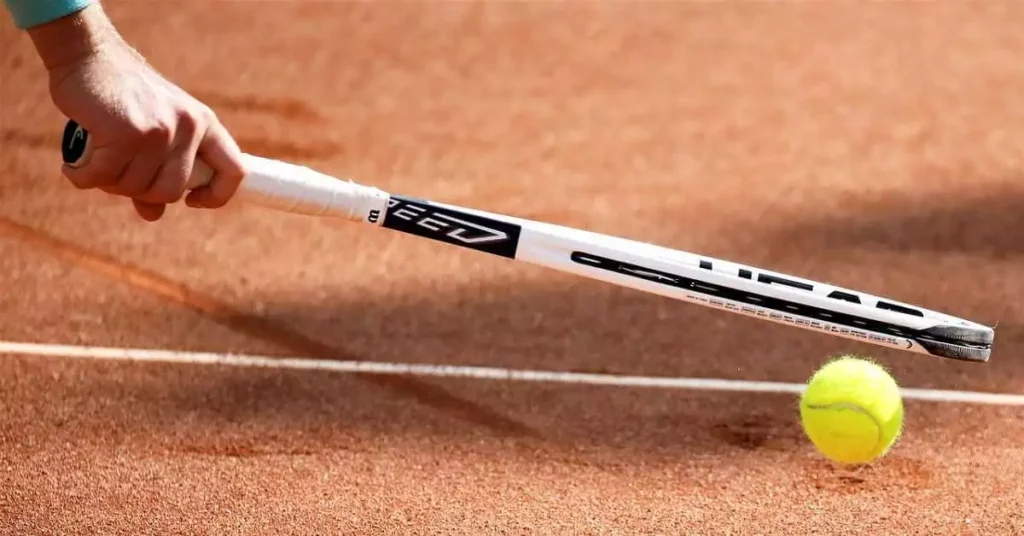
When it comes to playing tennis, having the right grip on your racket is crucial to your success on the court. The grip is the only point of contact between you and the racket, and it affects your control, power, and overall performance. Therefore, it is essential to choose a grip that is comfortable and stable in your hand.
A good tennis grip provides you with the necessary stability and control to hit the ball with precision. It allows you to adjust your grip quickly and easily, which is important during rallies. A proper tennis grip also helps you generate more power and spin on your shots, which can give you a significant advantage over your opponent.
Comfort is another crucial factor to consider when choosing a tennis grip. If your grip is not comfortable, you will not be able to play your best tennis. A comfortable tennis grip reduces the risk of injury and allows you to play for longer periods without experiencing fatigue or discomfort.
The right tennis grip can also improve your overall performance on the court. It can help you hit your shots more accurately and consistently, which can lead to more success in your matches. A good grip can also give you the confidence you need to play your best tennis and achieve your goals.
Types of Tennis Grips

The tennis grip you use can have a significant impact on your performance. There are several different types of tennis grips, each with its own advantages and disadvantages.
Continental Grip
The continental grip is the most basic and versatile grip in tennis. This grip involves placing your hand on the racket handle in a way that the base knuckle of your index finger and the heel pad of your hand rest on the top bevel of the racket handle. This grip is ideal for serving, volleying, and hitting overhead shots.
Eastern Grip
The eastern grip is another popular tennis grip. This grip involves placing your hand on the racket handle in a way that the base knuckle of your index finger rests on the third bevel of the racket handle. This grip is ideal for hitting flat shots and topspin shots.
Western Grip
The western grip is a more extreme grip that involves placing your hand on the racket handle in a way that the base knuckle of your index finger rests on the fifth bevel of the racket handle. This grip is ideal for hitting heavy topspin shots.
Semi-Western Grip
The semi-western grip is a compromise between the eastern and western grips. This grip involves placing your hand on the racket handle in a way that the base knuckle of your index finger rests on the fourth bevel of the racket handle. This grip is ideal for hitting topspin shots.
Forehand Grip
The forehand grip is the grip you use when hitting forehand shots. There are three types of forehand grips: the eastern forehand grip, the semi-western forehand grip, and the western forehand grip. The grip you use will depend on your playing style and the type of shot you want to hit.
Backhand Grip
The backhand grip is the grip you use when hitting backhand shots. There are three types of backhand grips: the eastern backhand grip, the semi-western backhand grip, and the western backhand grip. The grip you use will depend on your playing style and the type of shot you want to hit.
Two-Handed Backhand Grip
The two-handed backhand grip involves placing your dominant hand in an eastern or semi-western grip and placing your non-dominant hand above it in a continental grip. This grip is ideal for hitting backhand shots with more power and control.
Choosing the Right Tennis Grip
Choosing the right tennis grip is essential for any player, regardless of their skill level. The grip affects the angle of the racket face and the amount of spin you can put on the ball, so it’s important to choose the right one for each shot. Here are some tips to help you choose the right tennis grip:
Consider your level of play
Beginners should start with a basic grip, such as the Eastern forehand grip, which is the most commonly used grip in tennis. As you become more comfortable with your strokes, you can experiment with other grips, such as the Western forehand grip or the Semi-Western forehand grip. Advanced players may use a Continental grip for certain shots, such as the serve or volley.
Consider your dominant hand
If you’re right-handed, your dominant hand should be your right hand, and your non-dominant hand should be your left hand. The tennis grip you choose for each hand will depend on the stroke you’re making. For example, for a forehand stroke, your dominant hand should be in a grip that allows you to generate power, such as the Eastern forehand grip.
Consider your fingers and wrist
Your tennis grip should be comfortable and allow you to easily move your fingers and wrist. If your grip is too tight, you may experience discomfort or even injury. If your grip is too loose, you may have trouble controlling the ball. Experiment with different grips to find one that feels comfortable and allows you to move your fingers and wrist freely.
Use the base knuckle and index finger
When choosing a tennis grip, it’s important to use the base knuckle of your index finger as a guide. This knuckle should be on the third bevel of the racket handle. Your index finger should wrap around the handle, with the base knuckle resting on the third bevel. Your thumb should be on the opposite side of the handle, with the tip touching the index finger.
Grip Transitions
Transitions between different tennis grips are essential to master in order to be an effective tennis player. When transitioning between grips, it is important to maintain proper technique and balance to ensure effective shots.
One common grip transition is from the Eastern forehand grip to the Continental grip. This transition is used when hitting a slice backhand or a volley. To transition, you should rotate your grip slightly counterclockwise, so that your index knuckle is on the third bevel. This grip transition allows for better control and accuracy on slice shots and volleys.
Another common tennis grip transition is from the Eastern forehand grip to the Semi-Western forehand grip. This transition is used when hitting topspin shots. To transition, you should rotate your grip slightly clockwise, so that your index knuckle is on the second bevel. This grip transition allows for more topspin and power on your shots.
When transitioning between tennis grips, it is important to maintain proper technique and balance. Make sure to keep your wrist firm and your elbow close to your body to maintain control of the racket. Additionally, make sure to transfer your weight from your back foot to your front foot as you swing to maintain balance and power.
The Role of Grips in Different Shots
The type of grip you use in tennis plays a crucial role in how you hit the ball and the type of shot you can produce. Each grip has its own advantages and disadvantages, and it’s important to choose the right one for the shot you want to make.
Forehand
The most common grip used for forehand shots is the Eastern grip. This grip allows you to hit the ball with power and spin, making it ideal for groundstrokes and topspin shots. If you want to hit a flat shot, you can adjust your grip slightly towards the Continental grip. This will give you more control over the ball and allow you to hit a flatter shot.
Backhand
There are two types of backhand grips: the Eastern backhand grip and the Two-handed backhand grip. The Eastern backhand grip is similar to the Eastern forehand grip and is ideal for hitting topspin shots. The Two-handed backhand grip is used by players who want more power and control over their shots.
Serve
The Continental grip is the most commonly used grip for serving. This grip allows you to hit the ball with power and accuracy, making it ideal for serving. If you want to hit a slice serve, you can adjust your grip slightly towards the Eastern grip. This will give you more control over the ball and allow you to hit a slice serve.
Volleys and Overheads
The Continental grip is also the most commonly used grip for volleys and overheads. This grip allows you to hit the ball with precision and control, making it ideal for net play.
Slices
The Continental grip is the most commonly used grip for slice shots. This grip allows you to hit the ball with spin and control, making it ideal for slice shots.
Drop Shots
The Eastern grip is the most commonly used grip for drop shots. This grip allows you to hit the ball with spin and control, making it ideal for drop shots.
Grips and Court Play
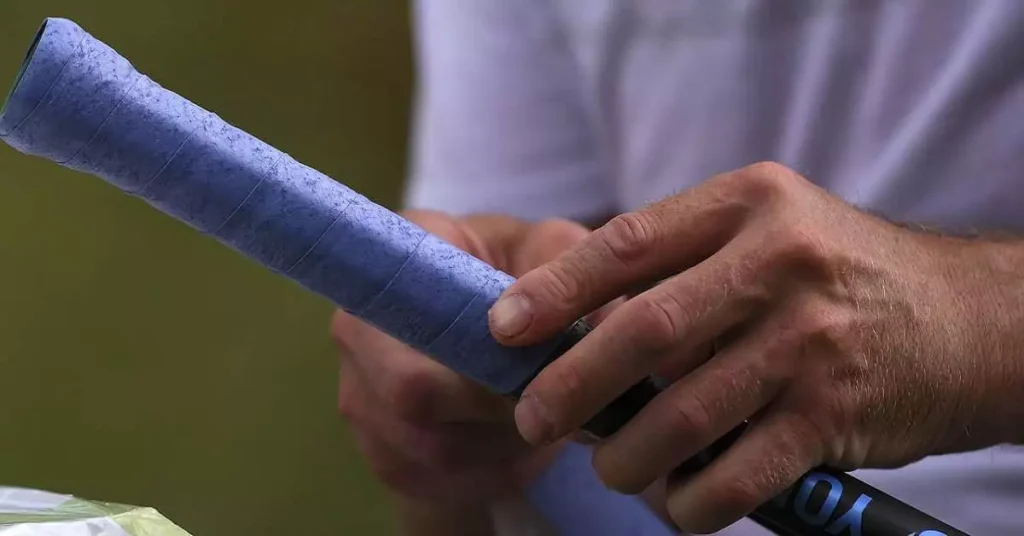
Different grips are better suited for different types of shots and court surfaces. Here’s a breakdown of how to use each grip on the court:
Continental Grip
The Continental grip is the most versatile grip and can be used for a variety of shots, including volleys, serves, and overheads. It allows for greater control and precision, making it ideal for shots that require a delicate touch. When playing on a fast court, such as a hard court, the Continental grip can give you an advantage because it allows you to react quickly to your opponent’s shots.
Eastern Forehand Grip
The Eastern Forehand grip is the most commonly used grip for forehand shots. It allows for greater topspin and power, making it ideal for baseline play. When playing on a slow court, such as a clay court, the Eastern Forehand grip can give you an advantage because it allows you to generate more spin and control the ball better.
Western Forehand Grip
The Western Forehand grip is a more extreme version of the Eastern Forehand grip. It allows for even greater topspin and power, making it ideal for players who like to hit with a lot of spin. When playing on a slow court, such as a clay court, the Western Forehand grip can give you an advantage because it allows you to generate more spin and control the ball better.
Semi-Western Forehand Grip
The Semi-Western Forehand grip is a compromise between the Eastern Forehand grip and the Western Forehand grip. It allows for a good balance between power and spin, making it ideal for players who want to hit with both. When playing on a medium-paced court, such as a grass court, the Semi-Western Forehand grip can give you an advantage because it allows you to hit with a good balance of power and spin.
Two-Handed Backhand Grip
The Two-Handed Backhand grip is used for backhand shots and provides extra control and power. It is ideal for players who want to hit with more power and control on their backhand shots. When playing on a fast court, such as a hard court, the Two-Handed Backhand grip can give you an advantage because it allows you to hit with more power and control.
One-Handed Backhand Grip
The One-Handed Backhand grip is used for backhand shots and provides greater reach and versatility. It is ideal for players who want to hit with more reach and versatility on their backhand shots. When playing on a medium-paced court, such as a grass court, the One-Handed Backhand grip can give you an advantage because it allows you to hit with more reach and versatility.
Axe Grip
The axe grip is a unique grip that can help you generate more power and spin on your shots. To use this grip, hold your racket as you would for a forehand grip, but turn your wrist so that the racket is perpendicular to the ground. This grip can be difficult to master, but it can be a powerful tool in your arsenal.
Grip Considerations for Different Game Styles
When it comes to tennis, there are different game styles that players can adopt. Each game style has its own unique characteristics, and the type of grip you use can have a significant impact on your performance. Here are some grip considerations to keep in mind for different game styles:
Power Game
If you have a power game, you rely on your strength and pace to hit the ball hard and fast. In this case, you want a grip that allows you to generate maximum power and control. The Eastern grip is a good choice for power players, as it allows you to hit the ball with a lot of pace and spin. You can also use the Semi-Western grip to generate more topspin and hit the ball with more control.
Control Game
If you have a control game, you rely on precision and accuracy to outmaneuver your opponent. In this case, you want a grip that allows you to hit the ball with a lot of control and finesse. The Continental grip is a good choice for control players, as it allows you to hit the ball with a lot of touch and feel. You can also use the Eastern grip to hit the ball with more accuracy and control.
All-Around Game
If you have an all-around game, you have a good balance of power and control. In this case, you want a grip that allows you to hit the ball with both power and finesse. The Semi-Western grip is a good choice for all-around players, as it allows you to hit the ball with a good combination of power and spin. You can also use the Eastern grip to hit the ball with more control and accuracy.
Counterclockwise Spin
If you want to hit the ball with a counterclockwise spin, you want a grip that allows you to generate maximum spin and control. The Semi-Western grip is a good choice for counterclockwise spin, as it allows you to hit the ball with a lot of topspin. You can also use the Eastern grip to hit the ball with more control and accuracy.
Flatter Shots
If you want to hit the ball with flatter shots, you want a grip that allows you to generate maximum power and control. The Eastern grip is a good choice for flatter shots, as it allows you to hit the ball with a lot of pace and accuracy. You can also use the Semi-Western grip to hit the ball with more spin and control.
FAQ
How many types of tennis grips are there?
There are several types of grips used in tennis, including the Eastern, Western, Continental, Semi-Western, and Eastern Backhand grips. Each grip has its own advantages and disadvantages, and it’s important to understand how and when to use them.
What is the difference between grip and overgrip?
A grip is the base layer of material that covers the handle of a tennis racket, while an overgrip is a thinner layer of material that is wrapped over the grip for added comfort and traction. Overgrips are typically used to extend the life of the grip and provide a better feel for the racket.
How do you know which tennis grip to use for different shots?
The grip you use for different shots depends on the type of shot you’re hitting and your personal preference. For example, the Continental grip is often used for volleys and serves, while the Eastern grip is commonly used for groundstrokes. It’s important to experiment with different grips to find the one that works best for you.
What is the difference between an Eastern and Western grip?
The Eastern grip is a more traditional grip that is often used for groundstrokes, while the Western grip is a more modern grip that is commonly used for topspin shots. The main difference between the two is the placement of the hand on the racket handle.
Can changing your grip improve your game?
Changing your grip can potentially improve your game by allowing you to hit different types of shots with more power and accuracy. However, it’s important to make changes gradually and to practice with the new grip before using it in a match. It’s also important to find a grip that is comfortable and natural for you.
What’s your favorite type of grip and why? Are there any specific grips that you use for different shots or situations on the court? Share your thoughts and experiences on the topic in the comments section below.

